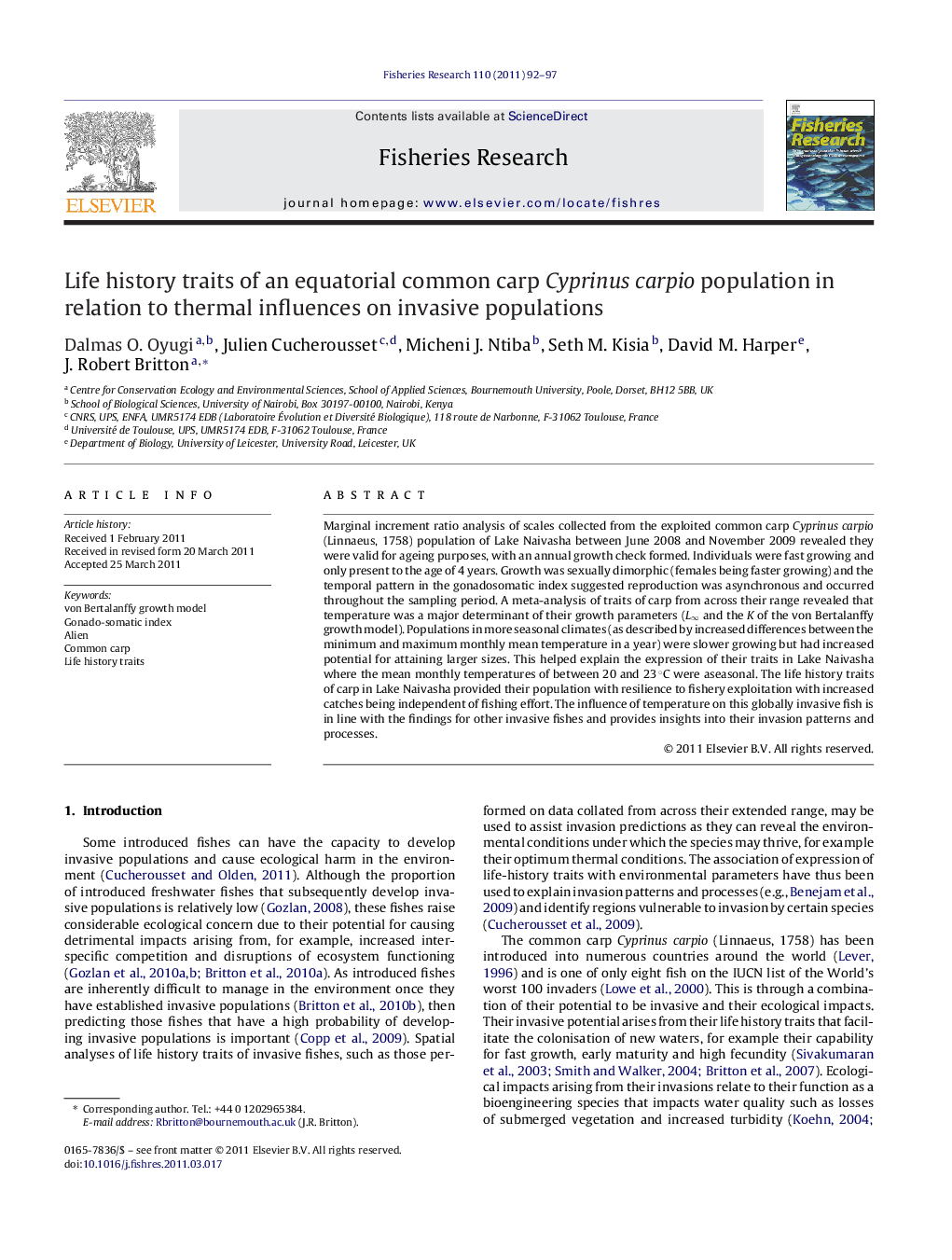| کد مقاله | کد نشریه | سال انتشار | مقاله انگلیسی | نسخه تمام متن |
|---|---|---|---|---|
| 4543628 | 1327158 | 2011 | 6 صفحه PDF | دانلود رایگان |

Marginal increment ratio analysis of scales collected from the exploited common carp Cyprinus carpio (Linnaeus, 1758) population of Lake Naivasha between June 2008 and November 2009 revealed they were valid for ageing purposes, with an annual growth check formed. Individuals were fast growing and only present to the age of 4 years. Growth was sexually dimorphic (females being faster growing) and the temporal pattern in the gonadosomatic index suggested reproduction was asynchronous and occurred throughout the sampling period. A meta-analysis of traits of carp from across their range revealed that temperature was a major determinant of their growth parameters (L∞ and the K of the von Bertalanffy growth model). Populations in more seasonal climates (as described by increased differences between the minimum and maximum monthly mean temperature in a year) were slower growing but had increased potential for attaining larger sizes. This helped explain the expression of their traits in Lake Naivasha where the mean monthly temperatures of between 20 and 23 °C were aseasonal. The life history traits of carp in Lake Naivasha provided their population with resilience to fishery exploitation with increased catches being independent of fishing effort. The influence of temperature on this globally invasive fish is in line with the findings for other invasive fishes and provides insights into their invasion patterns and processes.
► The life history traits of introduced Cyprinus carpio were found to favour fast growth and early reproduction in an equatorial lake.
► These facilitated invasion and provided resilience to fishery exploitation.
► Spatial analysis of C. carpio growth data from across their range revealed climate was a key regulator, with reduced growth in reduced temperatures.
► This relationship between temperature and life history traits helps explain the invasion patterns and processes of C. carpio at a global scale.
Journal: Fisheries Research - Volume 110, Issue 1, June 2011, Pages 92–97